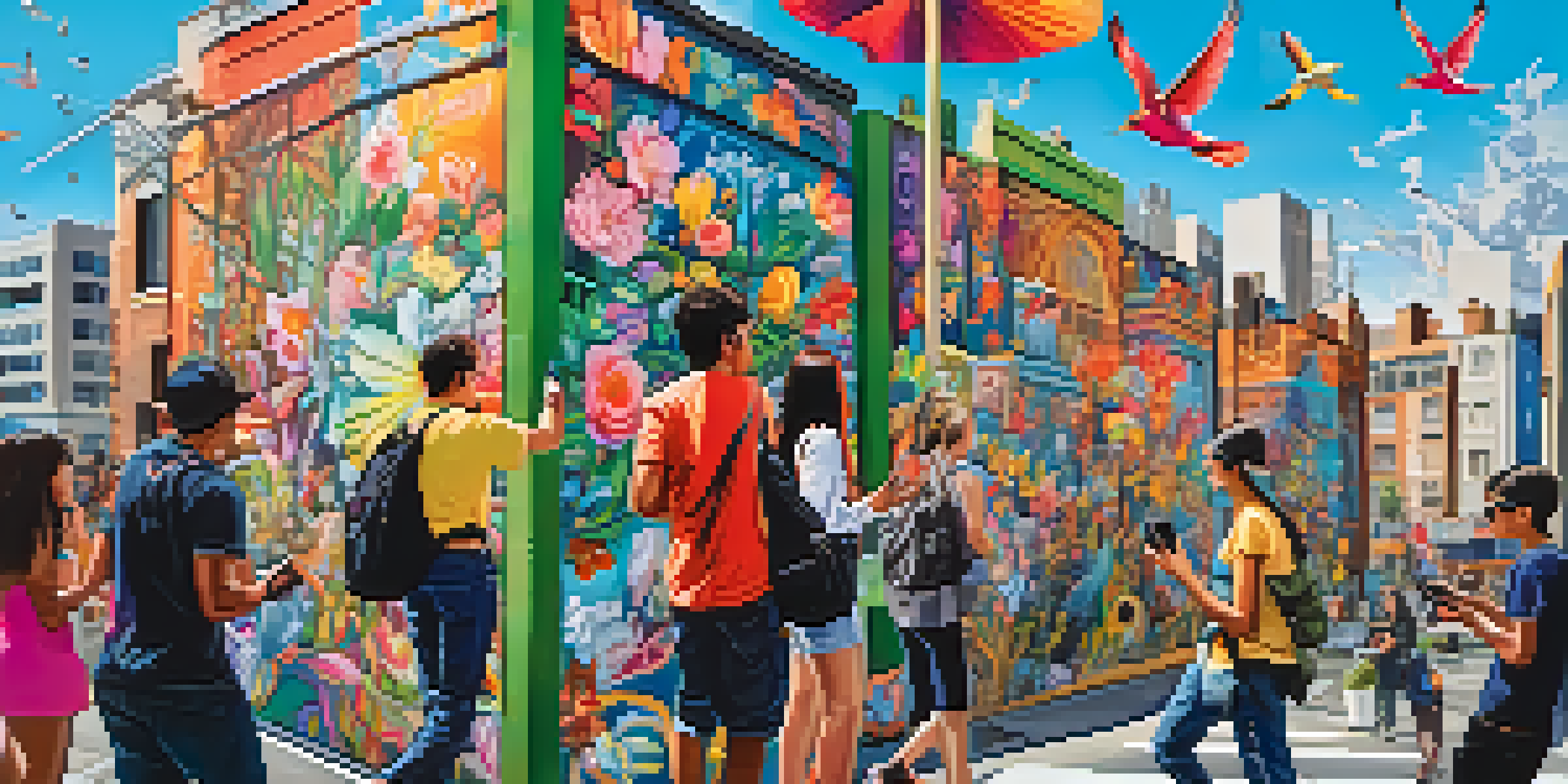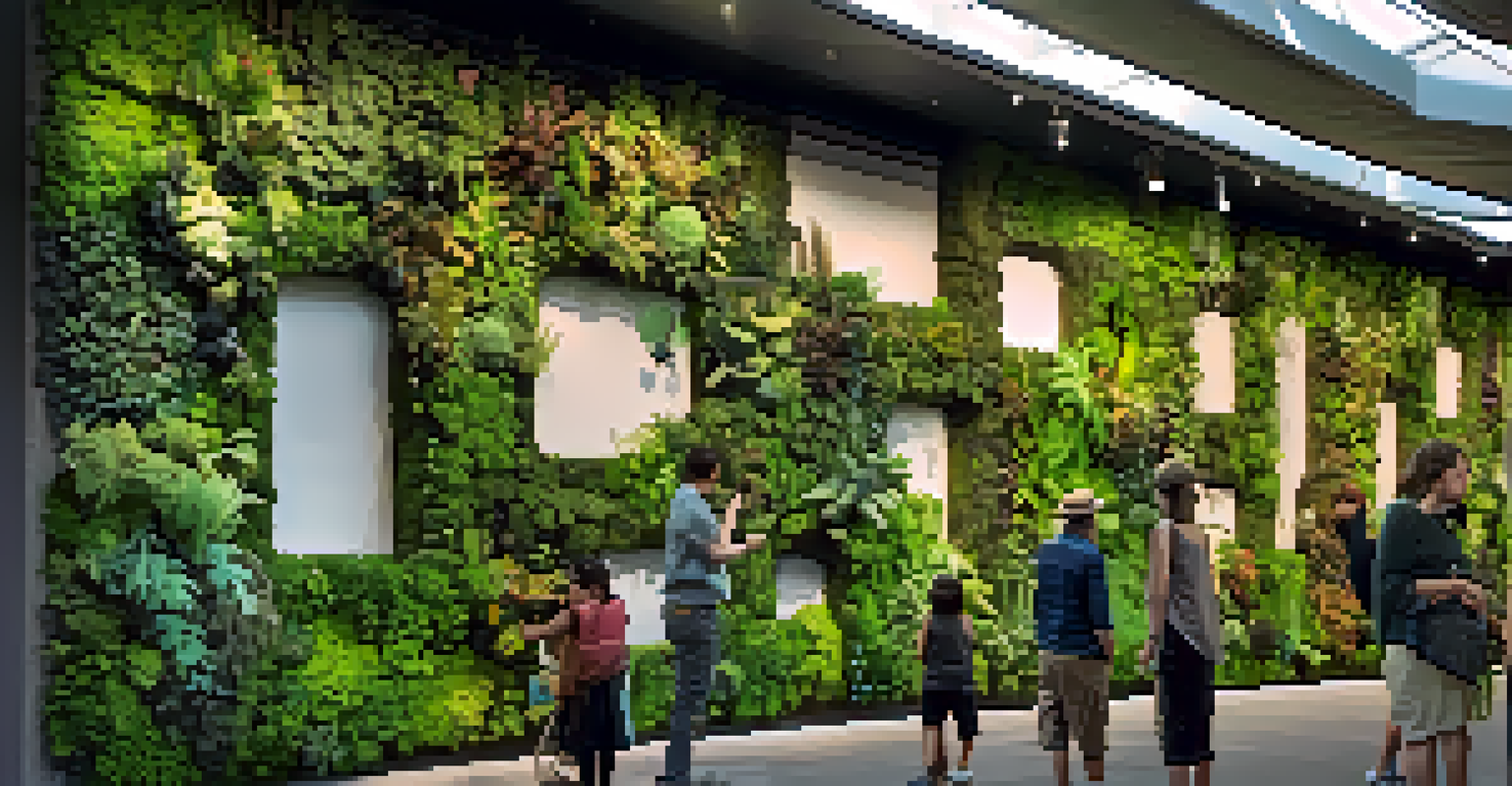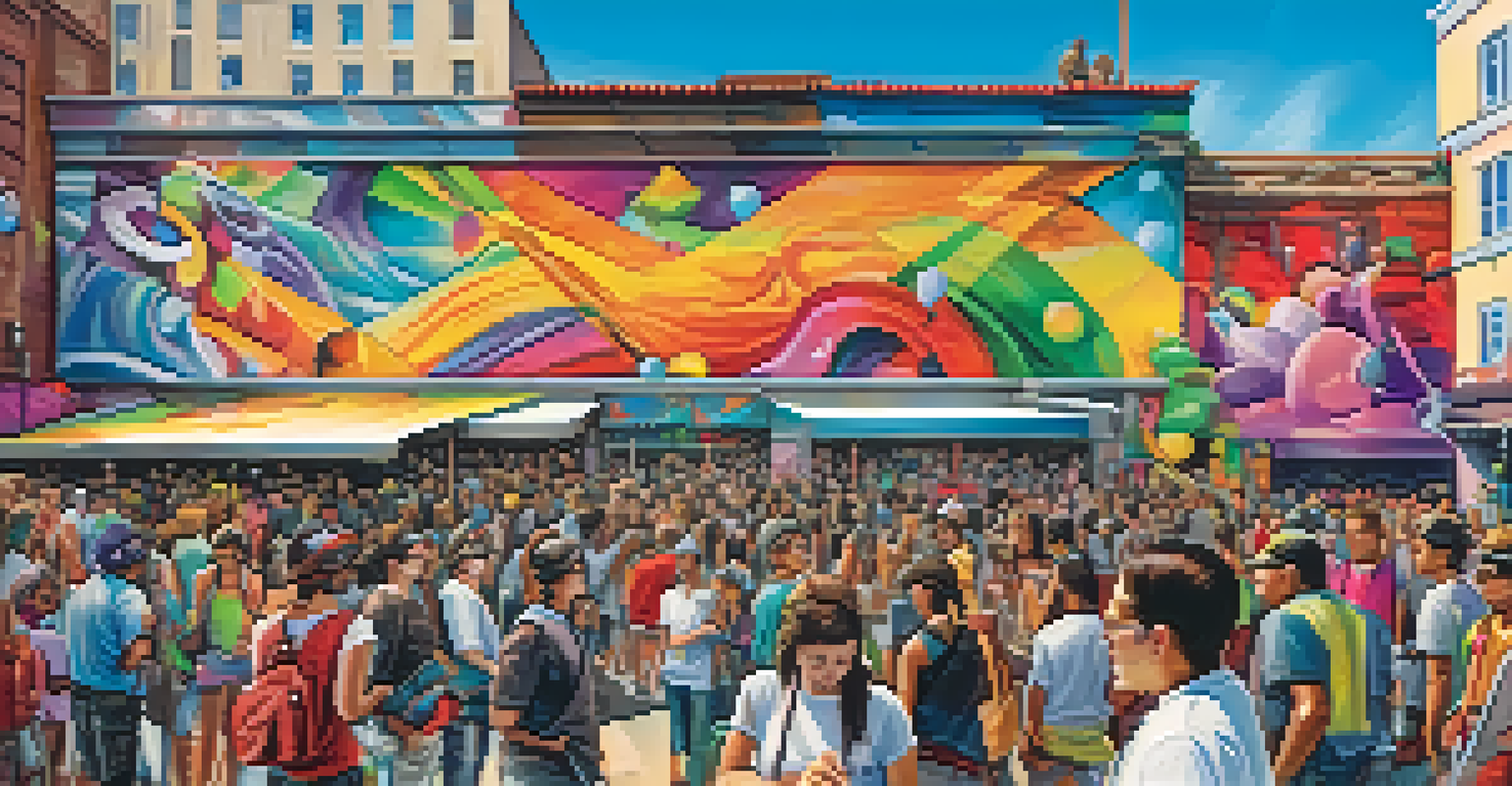The Future of Street Art: Trends for the Coming Decade

The Rise of Digital Street Art and Augmented Reality
As technology advances, street art is increasingly blending with digital elements. Artists are now using augmented reality (AR) to create immersive experiences that engage viewers in new ways. Imagine pointing your phone at a mural and seeing it come to life with animations or sound—a game changer for street art enthusiasts.
Art is not freedom from discipline, but disciplined freedom.
This digital shift allows artists to reach wider audiences beyond physical walls, as their creations can be shared and experienced online. Social media platforms are already buzzing with AR art, and this trend is likely to grow in the coming decade. The fusion of digital and traditional art forms will redefine how we perceive and interact with street art.
Moreover, this technological integration encourages collaboration among artists and tech developers, leading to innovative projects that push the boundaries of creativity. As AR technology becomes more accessible, we can anticipate a surge in street art that not only decorates spaces but also transforms them into interactive galleries.
Sustainability: Eco-Friendly Materials and Practices
Sustainability is no longer just a buzzword; it's becoming a vital aspect of street art. Artists are increasingly opting for eco-friendly materials, such as biodegradable spray paints and recycled surfaces. This shift not only reduces environmental impact but also sends a powerful message about the importance of caring for our planet.

In the coming years, we can expect to see more murals that incorporate natural elements, such as living walls featuring plants and moss. These installations not only beautify urban spaces but also contribute to air quality and biodiversity. The integration of nature into street art is a refreshing trend that highlights the artist's role as a steward of the environment.
Digital Art Transforms Street Art
Augmented reality is revolutionizing street art by creating interactive experiences that engage viewers in innovative ways.
The growing awareness of climate change is encouraging artists to engage with their communities on sustainability issues. Through workshops and public art projects, they are inspiring others to adopt eco-friendly practices, creating a ripple effect that extends beyond the art world.
Social and Political Commentary in Street Art
Street art has always been a powerful medium for social and political commentary, and this trend will only intensify in the coming decade. As societal issues continue to evolve, artists are using their platforms to address topics like inequality, climate justice, and human rights. Their bold messages resonate with communities and spark important conversations.
The role of the artist is to ask questions, not to answer them.
In recent years, we've seen street art become a tool for activism, with murals serving as visual protests in response to current events. This trend is likely to grow, as artists find creative ways to express dissent and advocate for change. The immediacy of street art allows it to respond quickly to pressing issues, making it a vital part of the social dialogue.
Moreover, the global interconnectedness facilitated by social media means that these messages can reach audiences far and wide. Artists can amplify their voices and connect with like-minded individuals, creating a sense of solidarity that transcends borders and inspires collective action.
The Evolution of Street Art Festivals and Events
Street art festivals have gained popularity over the past decade, creating vibrant spaces for artists to showcase their work. These events foster a sense of community and provide opportunities for collaboration among artists from diverse backgrounds. As we look ahead, we can expect even more innovative festivals that celebrate the art form's evolution.
Future street art festivals may focus on themes like sustainability, inclusivity, and technology, attracting a diverse audience and encouraging dialogue around these important topics. Additionally, the integration of workshops and artist talks will enrich the experience for attendees, allowing them to learn more about the creative process behind the art.
Sustainability in Street Art
Artists are increasingly using eco-friendly materials and practices, highlighting the importance of environmental stewardship through their work.
These gatherings not only elevate street art as a legitimate art form but also bolster local economies as they draw tourists and art enthusiasts. By embracing the festival culture, cities can enhance their cultural landscapes and foster a deeper appreciation for the transformative power of street art.
The Role of Public Spaces in Shaping Street Art
Public spaces are the canvas for street art, and their evolution will significantly influence the art form's future. As cities rethink urban design, there’s a growing recognition of the value of public art in enhancing community identity. This shift is likely to lead to more dedicated spaces for street art, allowing artists to experiment and innovate without fear of censorship.
Moreover, the increased collaboration between artists, city planners, and local governments will foster an environment where street art can thrive. By integrating art into urban planning, cities can create dynamic spaces that reflect the community's spirit and history. This symbiotic relationship will encourage more artists to engage with public spaces creatively.
As we move forward, the dialogue around public spaces will also encompass issues of accessibility and inclusivity. Ensuring that street art is accessible to all will become a priority, with initiatives aimed at involving underrepresented voices in the artistic process. This evolution will enrich the street art landscape, making it more diverse and representative of the communities it serves.
The Impact of Globalization on Street Art Styles
Globalization has had a profound impact on street art, allowing artists to draw inspiration from diverse cultures and styles. As artists travel and share ideas across borders, we can expect a blending of techniques and themes that reflect a more interconnected world. This melting pot of creativity will breathe new life into street art, pushing it in exciting directions.
In the coming decade, street art will continue to reflect global issues, such as migration, identity, and cultural exchange. Artists will likely create works that celebrate their cultural heritage while also addressing universal themes that resonate with a global audience. This interplay between local and global perspectives will enrich the narrative of street art.
Street Art as Social Commentary
Street art is becoming a vital medium for addressing social and political issues, allowing artists to spark important conversations within communities.
Furthermore, the rise of digital platforms enables artists to share their work with international audiences instantly. This exposure not only broadens their reach but also fosters collaborations that transcend geographical boundaries. As street art becomes a global phenomenon, we can look forward to a vibrant tapestry of styles and stories that reflect our shared humanity.
Emerging Artists and the Future of Street Art
As street art continues to evolve, new voices are emerging that will shape its future. Young artists are experimenting with unconventional mediums and techniques, pushing the boundaries of what street art can be. Their fresh perspectives and innovative approaches are essential for the ongoing evolution of the art form.
Mentorship programs and community initiatives are increasingly supporting emerging artists, providing them with the resources and platforms to showcase their work. This nurturing environment is crucial for fostering talent and ensuring that the next generation of street artists has the opportunity to thrive. By investing in these artists, we are investing in the future of street art.

Additionally, the rise of social media has democratized the art world, allowing emerging artists to gain visibility and connect with audiences worldwide. As they share their work online, they can build communities and engage with fans, creating a sense of belonging. This shift will undoubtedly lead to a more diverse and vibrant street art scene, reflecting a wide array of voices and experiences.